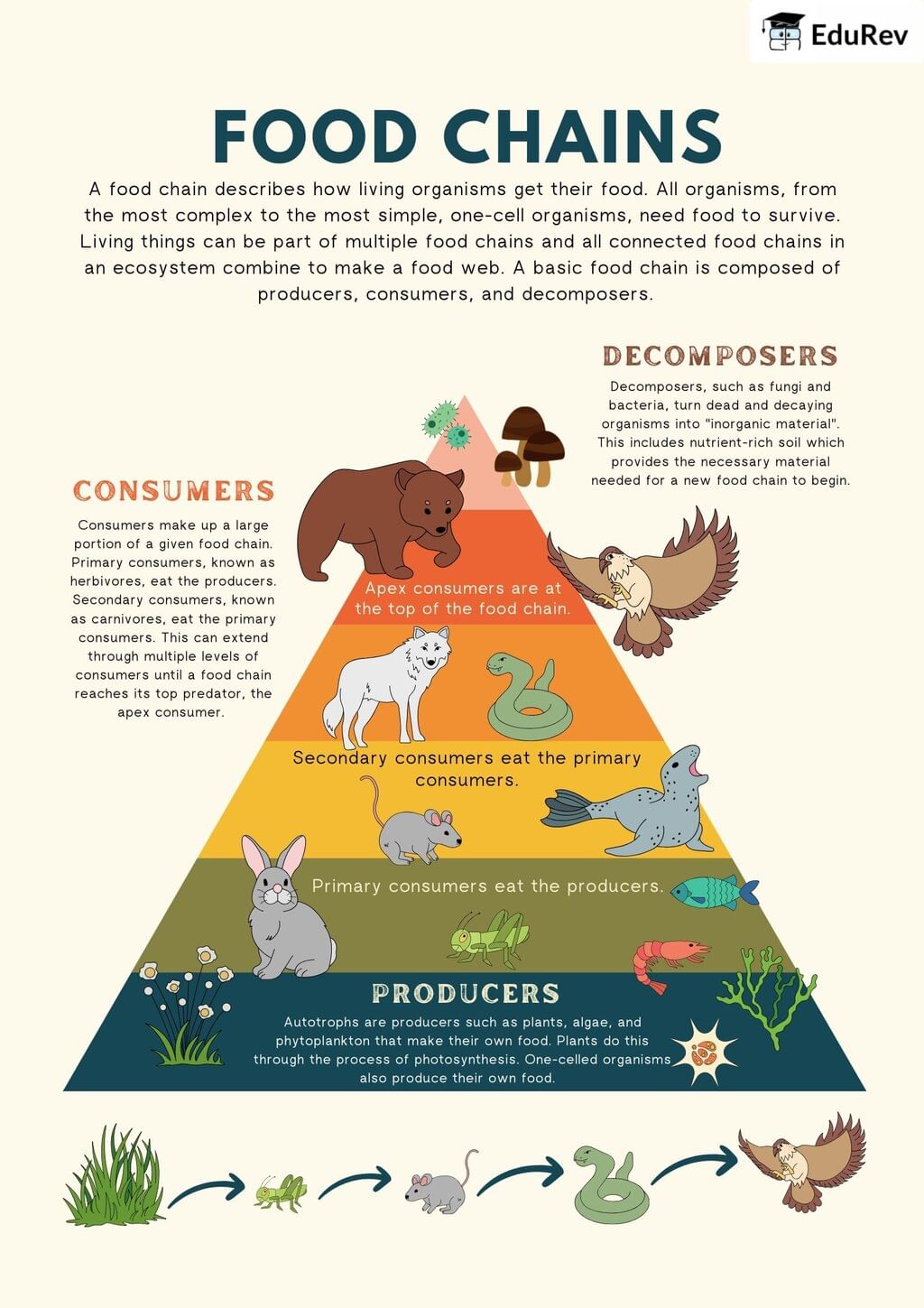NEET Exam > NEET Notes > Biology Class 12 > Infographics: Basic Concept of Food Chain
Infographics: Basic Concept of Food Chain | Biology Class 12 - NEET PDF Download

The document Infographics: Basic Concept of Food Chain | Biology Class 12 - NEET is a part of the NEET Course Biology Class 12.
All you need of NEET at this link: NEET
|
59 videos|290 docs|168 tests
|
FAQs on Infographics: Basic Concept of Food Chain - Biology Class 12 - NEET
| 1. What is a food chain and why is it important in an ecosystem? |  |
Ans. A food chain is a linear sequence that shows how energy and nutrients flow from one organism to another in an ecosystem. It typically starts with producers, like plants, which convert sunlight into energy through photosynthesis. This energy is then passed on to consumers, such as herbivores and carnivores, that eat these producers and other consumers. Understanding food chains is crucial because they illustrate the interdependence of species, highlight the flow of energy, and help us understand the balance of ecosystems.
| 2. What are the different levels of a food chain? |  |
Ans. The food chain consists of several levels, commonly categorized as follows:
1. Producers (e.g., plants and algae) – Organisms that create their own food.
2. Primary consumers (e.g., herbivores) – Organisms that eat producers.
3. Secondary consumers (e.g., carnivores) – Organisms that eat primary consumers.
4. Tertiary consumers – Organisms that eat secondary consumers.
5. Decomposers (e.g., fungi and bacteria) – Organisms that break down dead matter, returning nutrients to the soil. Each level plays a vital role in maintaining ecological balance.
| 3. How do food chains relate to food webs? |  |
Ans. Food chains are simple linear representations of energy flow, while food webs are more complex networks that illustrate how multiple food chains interconnect within an ecosystem. In a food web, various organisms can occupy multiple roles, for instance, a species may be a primary consumer in one food chain and a secondary consumer in another. Food webs provide a more accurate depiction of the feeding relationships and energy flow within an ecosystem, demonstrating the complexity and interconnectedness of life.
| 4. What are some examples of food chains in different ecosystems? |  |
Ans. Examples of food chains include:
1. Terrestrial ecosystem: Grass (producer) → Grasshopper (primary consumer) → Frog (secondary consumer) → Snake (tertiary consumer).
2. Aquatic ecosystem: Phytoplankton (producer) → Zooplankton (primary consumer) → Small fish (secondary consumer) → Larger fish (tertiary consumer).
These examples show how energy is transferred through various organisms, highlighting the importance of each level in maintaining ecosystem health.
| 5. What impact do human activities have on food chains? |  |
Ans. Human activities, such as pollution, deforestation, and overfishing, can severely disrupt food chains. Pollution can lead to the death of producers, which affects all consumers that rely on them. Deforestation removes habitats for many organisms, altering food chains and reducing biodiversity. Overfishing can deplete fish populations, disrupting the balance of aquatic food chains. These impacts can lead to the collapse of ecosystems, demonstrating the need for sustainable practices to protect food chains and overall environmental health.
Related Searches





















